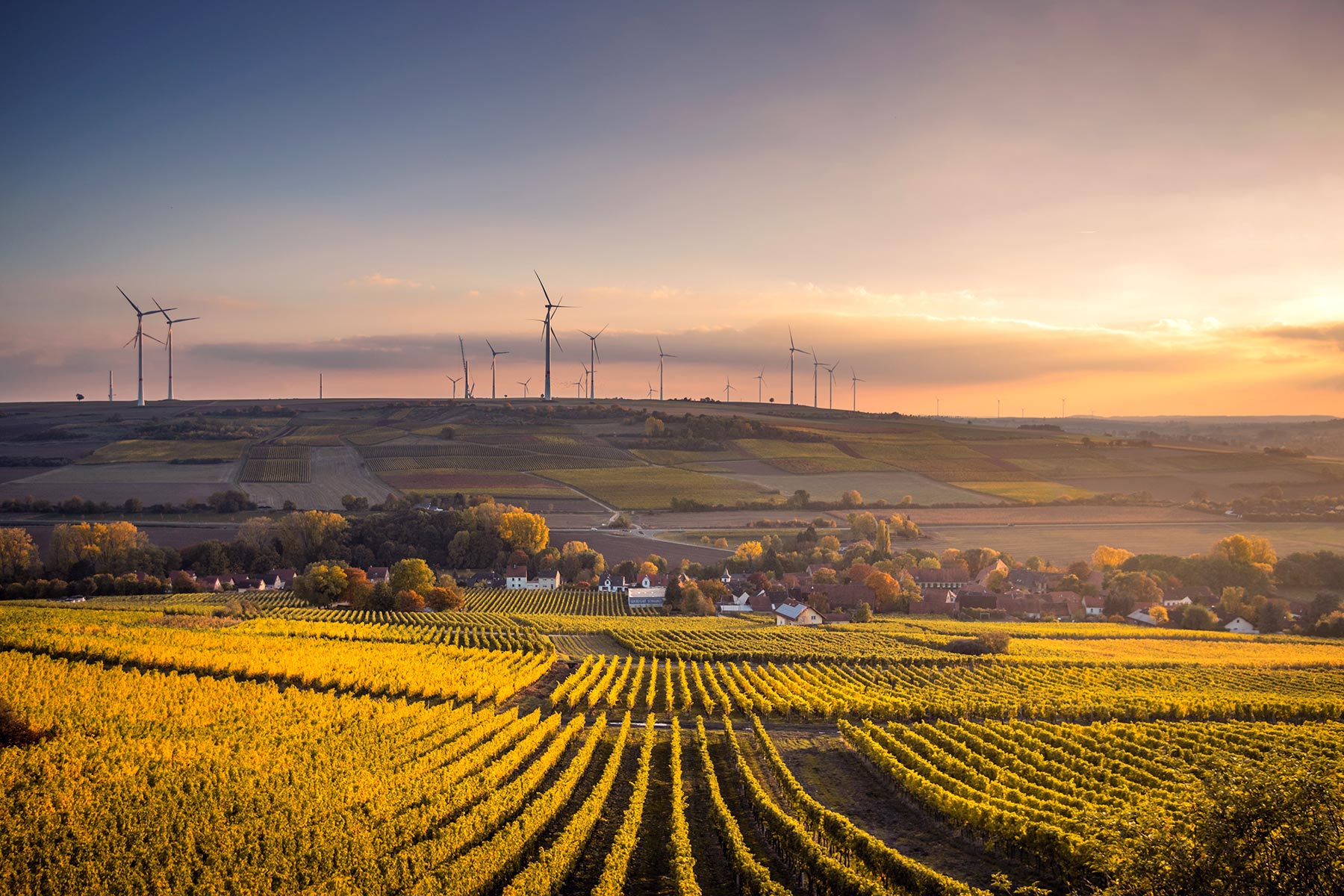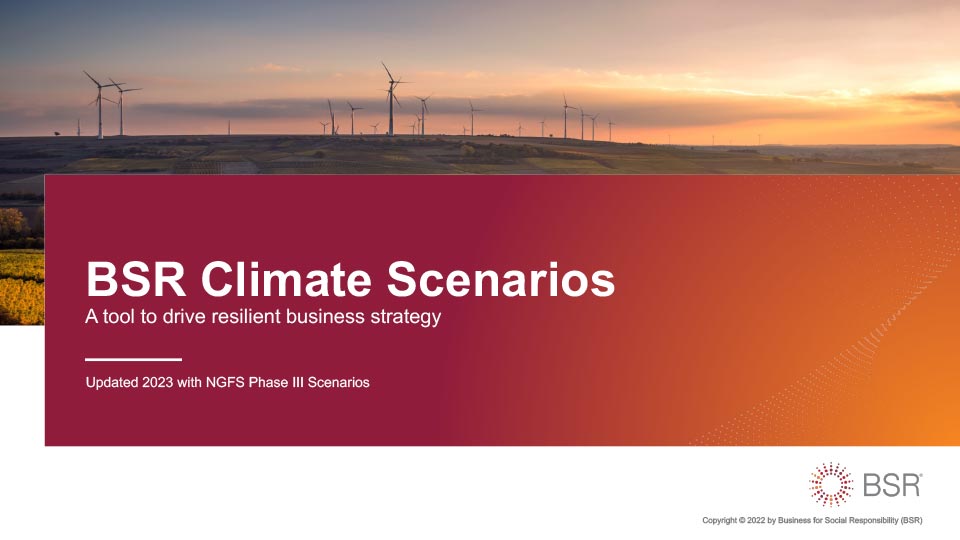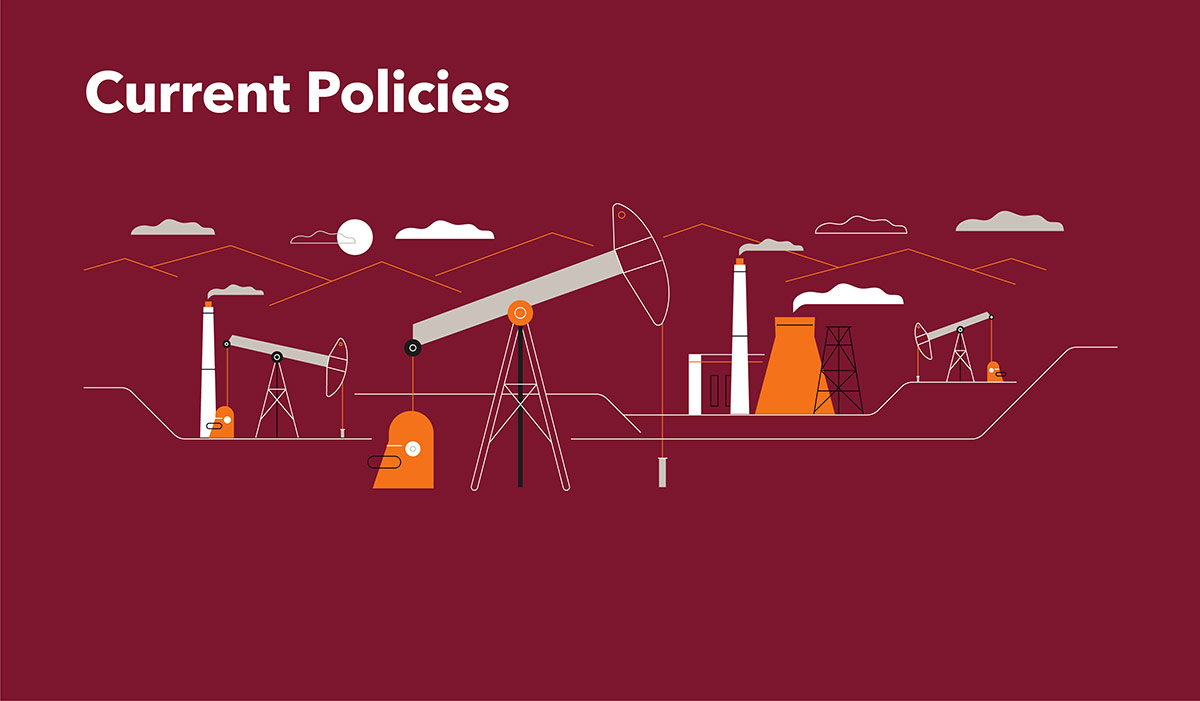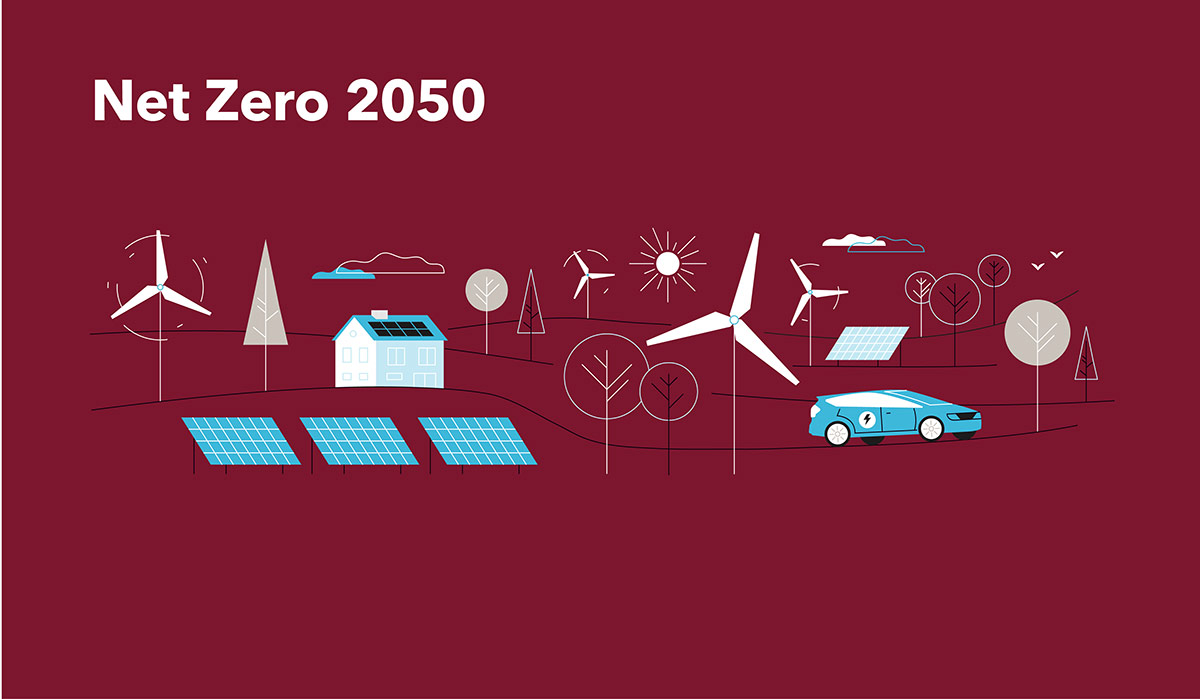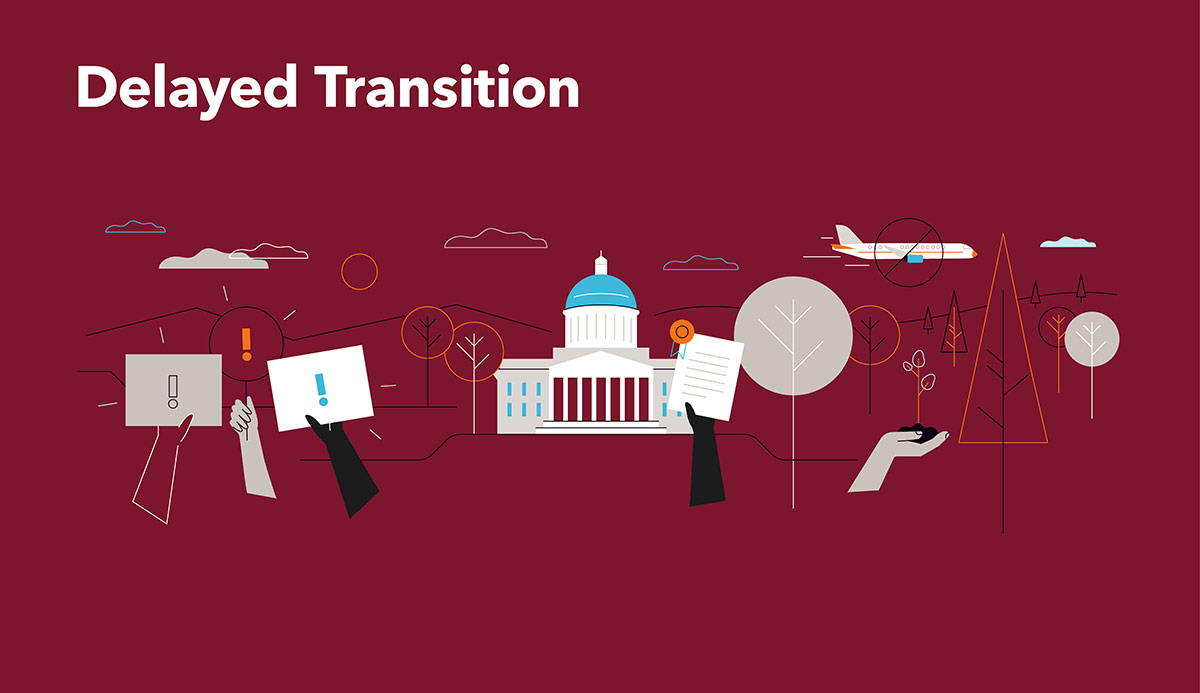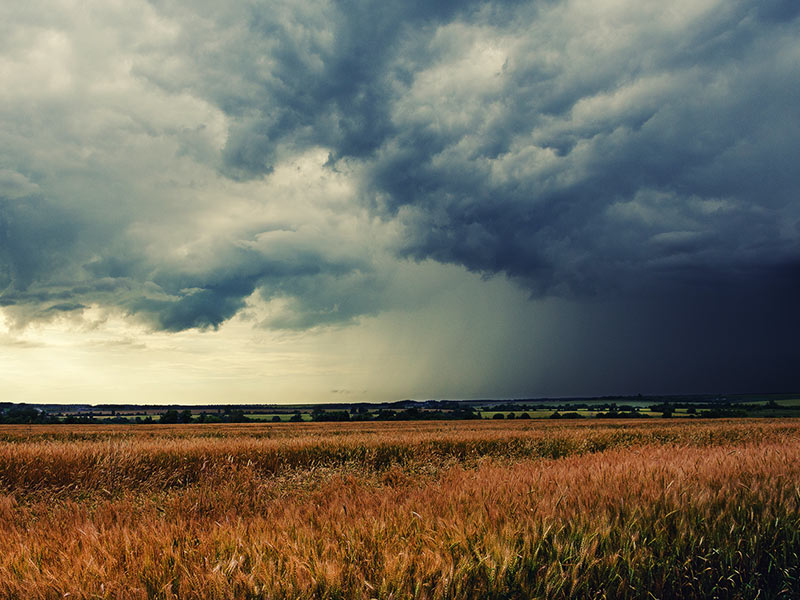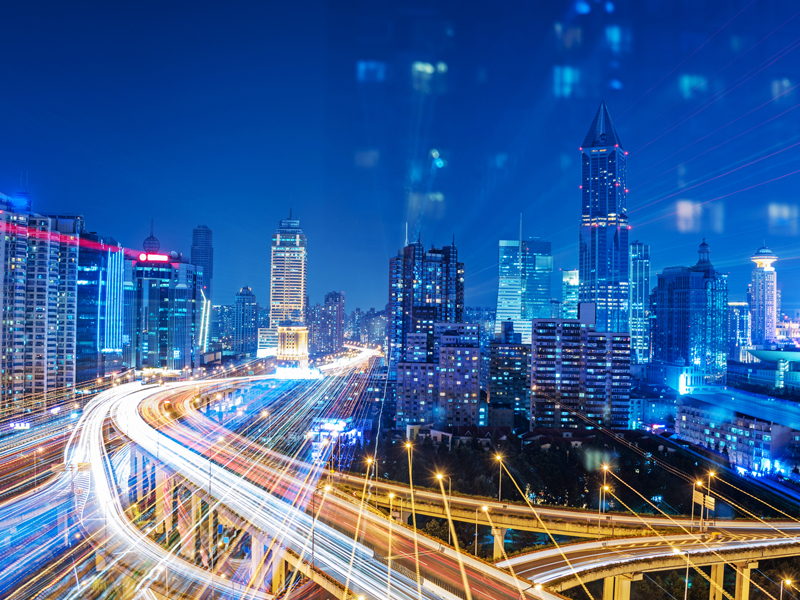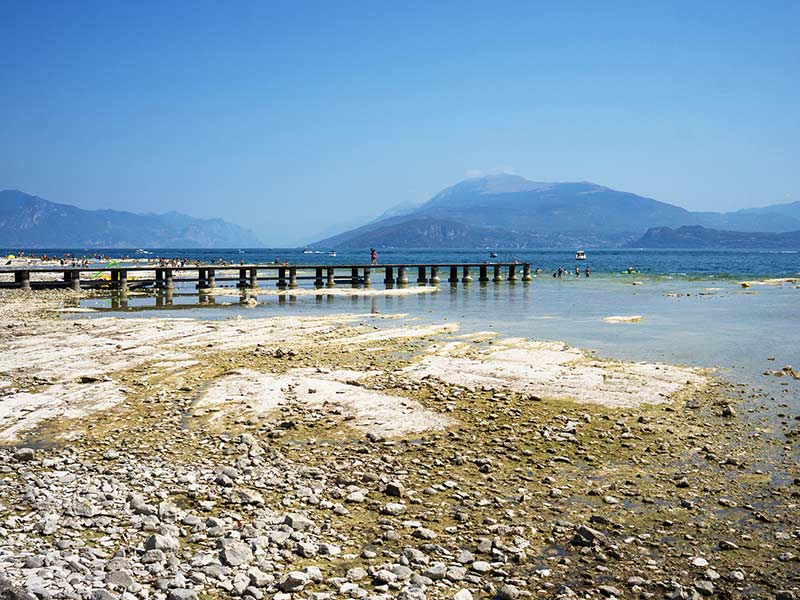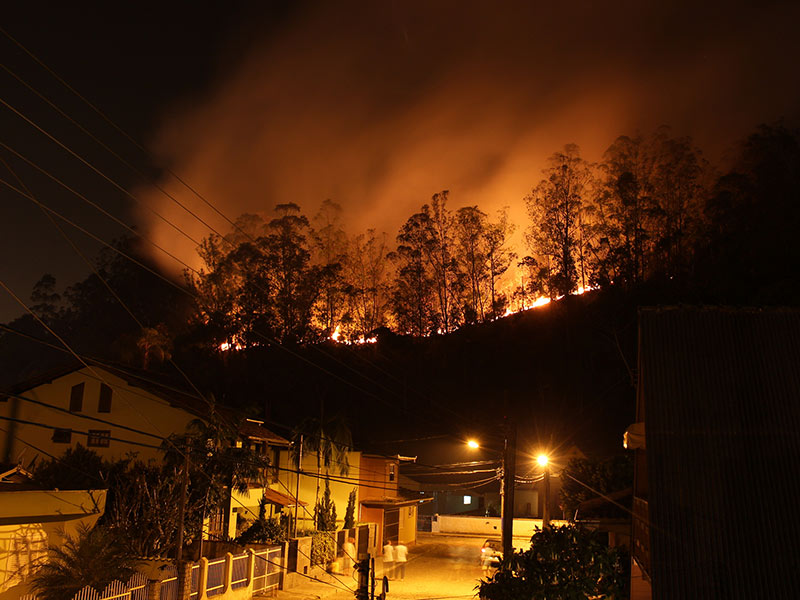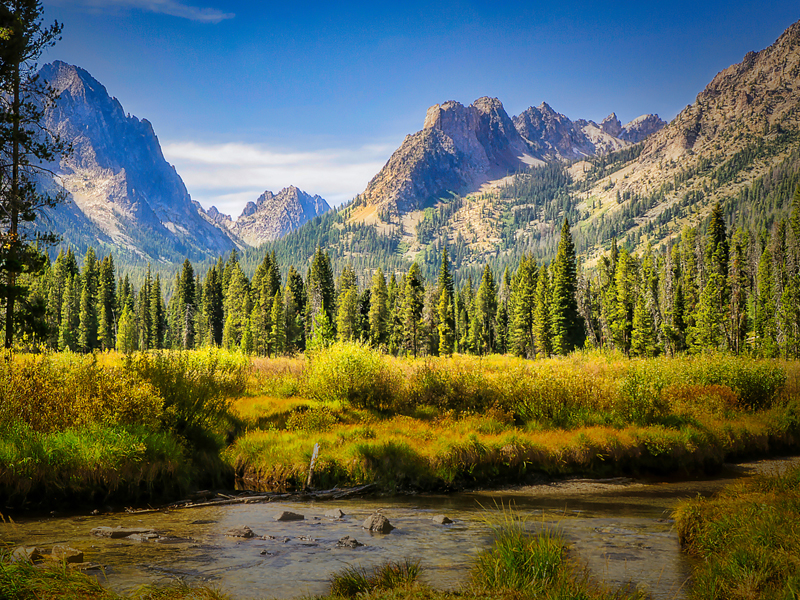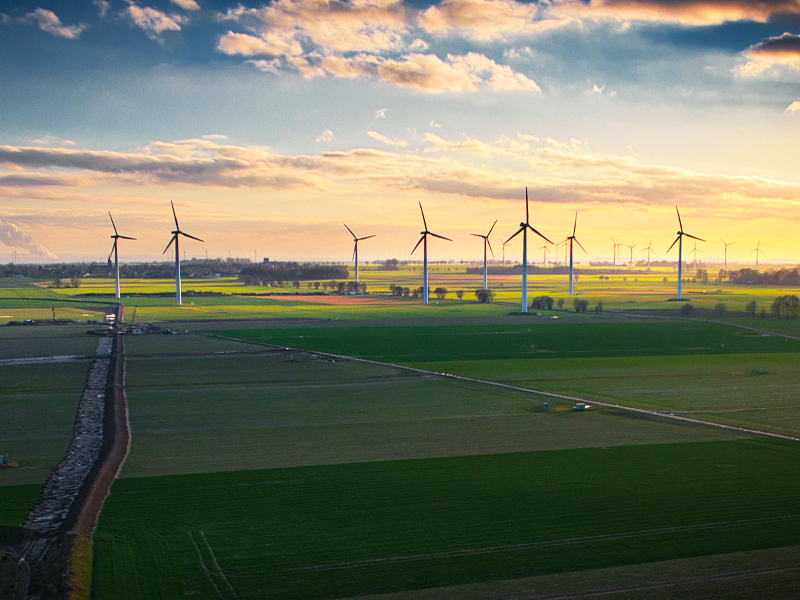Climate action has never been more urgent.
BSR’s climate scenario narratives are based on a range of temperature pathways and cross-disciplinary research to capture physical and transition risks. Based on decade-by-decade analysis, scenario planning can inform today’s climate risk disclosures, build resilient business strategies, and present key opportunities for bold action.
Explore the Scenarios
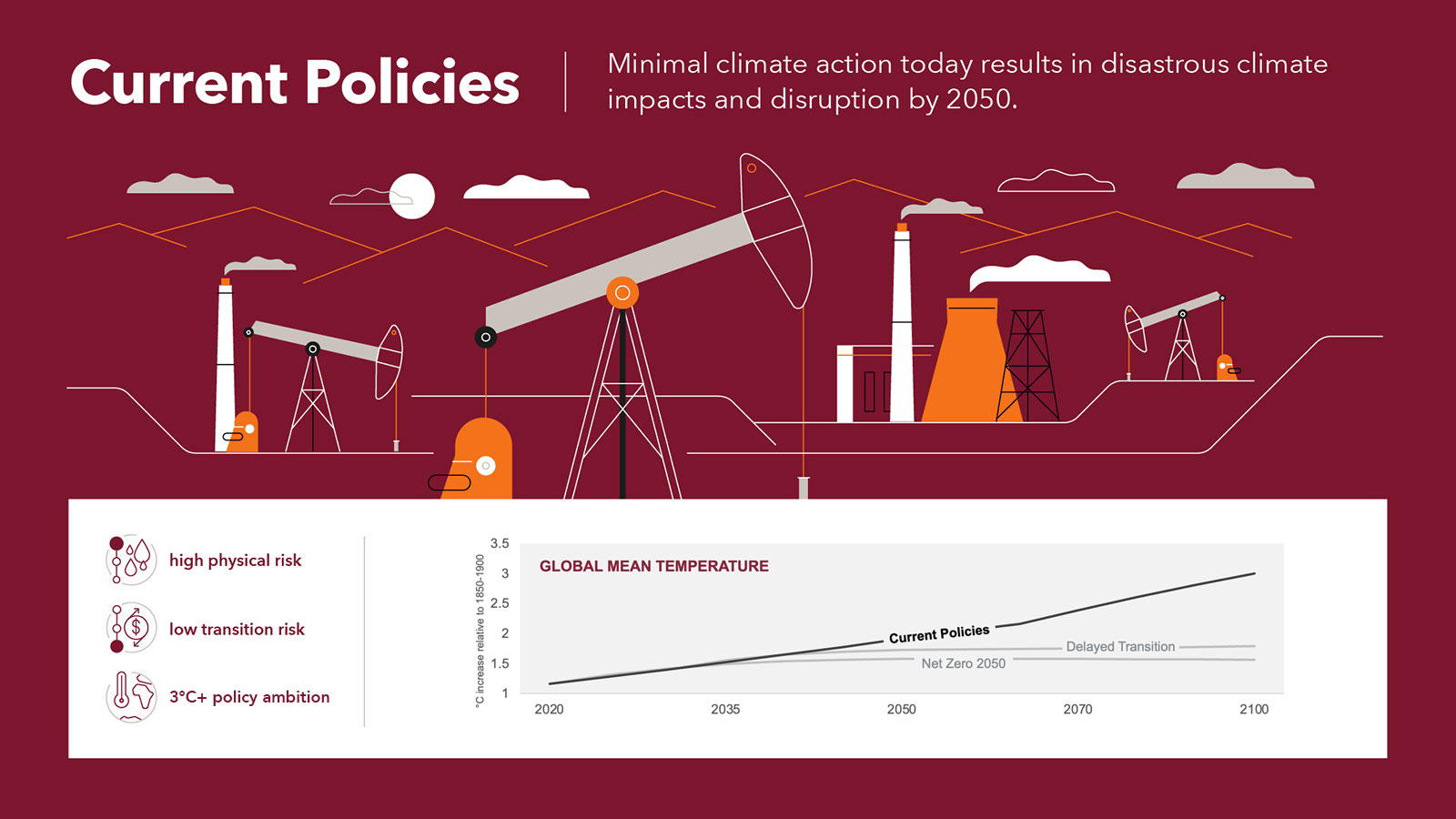
View from 2050
- Policies implemented as of 2021 were preserved, and no additional policy action was taken.
- Without government or business action, emissions grew rapidly.
- Physical climate impacts also increased in severity and frequency, causing economic loss, ecosystem damage, and human rights issues.
Current Policies: What Defined the Decades
The 2020s
Policies lacked ambition
As a result of political gridlock and economic concerns, climate action and policies were minimal in the 2020s. Companies followed a similar trajectory, with many missing their near-term climate targets.
Limited investment in the energy system
With geopolitical instability and high energy prices, most governments prioritized energy security and continued to rely on fossil fuels as an energy source.
Physical impacts brought disruption
Extreme weather events affected a growing share of the global population and caused increasing disruptions to global supply chains, significantly impacting agricultural production, manufacturing, and transportation of goods. This disruption was exacerbated by a retreat from globalization, which occurred due to a rise in security concerns and nationalistic ideas.
The 2030s
Low carbon prices failed to reduce emissions
Worsening physical impacts did not result in increased government action to curve emissions. In 2035, the world failed to meet its target of maintaining global temperature rise to 1.5⁰C above pre-industrial level, the recommended maximum warming to slow the worsening impacts of climate change.
Climate impacts continued to accelerate
Chronic and acute weather events became more severe and frequent across regions. Climate impacts on ports and trade routes led to ongoing supply chain disruptions, loss of supplier redundancy, and overall increased cost of goods.
Assets became uninsurable
With worsening weather patterns, assets in high-risk locations were deemed uninsurable and insurance companies restricted coverage. For businesses, this led to significant loss in asset value, higher rates of self-insurance, and greater reliance on disaster relief support from the public sector.
The 2040s
Adaptation became the focus of climate action
Climate negotiations shifted from mitigation towards adaptation, with historically high-emitting countries failing to assume financial responsibility for climate impacts. Most investment in adaptation took place in high-income countries, leaving the middle- and low-income countries most exposed.
Inequality was exacerbated
Vulnerable populations felt the growing pressure of lower agricultural productivity, extreme weather events, and the rising cost of goods. These impacts led to increased population displacement and, in some regions, gave rise to a climate refugee crisis. Health impacts were disproportionately felt by under-resourced communities, placing strain on public health systems.
Climate impacts led to economic loss
With growing GDP loss and volatile markets, operating under uncertainty was the new norm. Businesses were faced with increasing costs of goods, and a need for greater investment to protect their operations from extreme weather events.
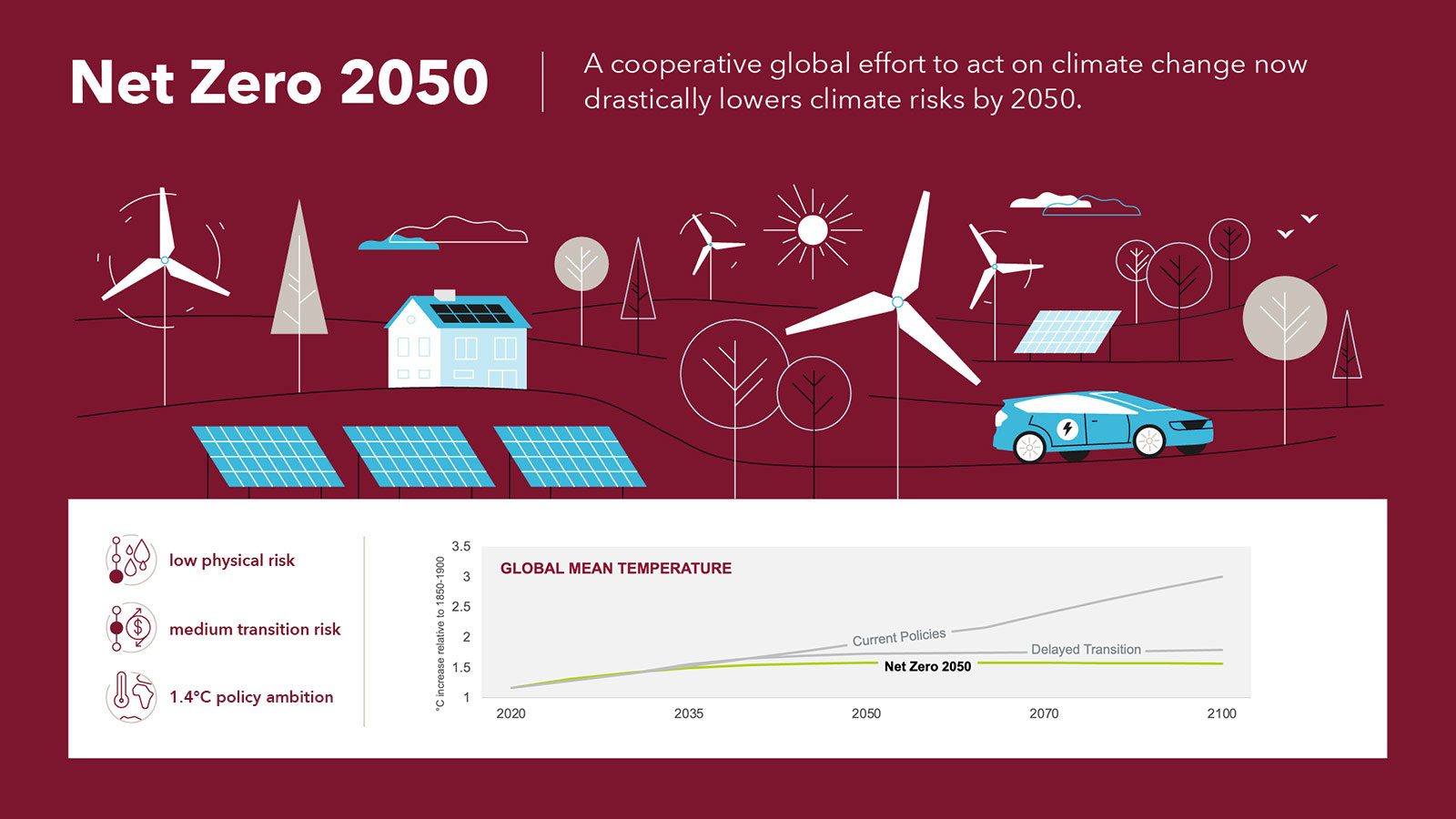
View from 2050
- The transition to a net-zero economy required drastic and coordinated global action from government, business, and civil society.
- The cost of action was high, with many industries being severely disrupted.
- Swift action resulted in warming peaking at 1.6°C in 2060, minimizing the impacts of climate change.
Net Zero: What Defined the Decades
The 2020s
Regulation and investment increased dramatically
Following recommendations from climate experts, policymakers acted swiftly to curb carbon emissions and reduce the long-term impacts of human-caused climate change. In this highly-regulated environment, economic impacts caused consumer discretionary spending to initially decline in more developed economies.
Economic activities redirected towards emissions reduction
As a response to new regulatory regimes, private sector investments in decarbonization technologies and innovation increased as companies acted quickly to reduce supply chain emissions.
Early climate impacts continued to escalate
Despite efforts to reduce emissions, the frequency of extreme weather events still increased incrementally due to past emissions, with heatwaves in Africa and Asia increasing roughly 50% from 2020 to 2030 and expected damage from hurricanes in the United States nearly doubling in the same period.
The 2030s
Regional variation in policies created inequality
Climate policies continued to escalate and ensure that businesses maintained their emissions reduction efforts. However, climate policies and their costs were not spread evenly across the globe. Socio-economic and equity concerns came to the forefront of climate action with low-income nations, Indigenous communities, women, and youth gaining stronger voices in climate negotiations.
Renewable energy system growth strained mineral supply chains
The technological boom of the 2020s resulted in a scarcity of key transition minerals, such as lithium for batteries. This led to temporary price increases and volatility.
Technological innovation brought new opportunities to reduce residual emissions
In the late 2030s attention began to shift from easier to hard-to-abate sectors such as cement, steel, and chemical production. As a result of combined efforts, economies were able to shift back to equilibrium. Prices for common goods and services stopped their upward trend, consumption loss stabilized, and disposable income leveled off or increased in most economies in the Global North.
The 2040s
Fossil fuel investments phased out
As a result of persistent climate policies, carbon prices continued to increase. To react, businesses phased out the remaining use of fossil fuels in their supply chains. Global fossil fuel investments in 2050 totaled less than US$0.42 billion, compared to US$404 billion in 2010 when global fossil fuel investments peaked.
Some manageable climate impacts remained
Although the world’s efforts to reduce emissions limited the severity of climate change, some climate impacts were still felt across the globe. Fortunately, many of these physical impacts stabilized at manageable levels and adaptation efforts were able to mitigate most of the risk for businesses.
Climate reparations facilitated increased equality
After emissions and global temperature stabilized, the economic development of previously vulnerable areas was promoted through reparation programs and international legal frameworks that held emitters responsible for the damages caused by climate change.
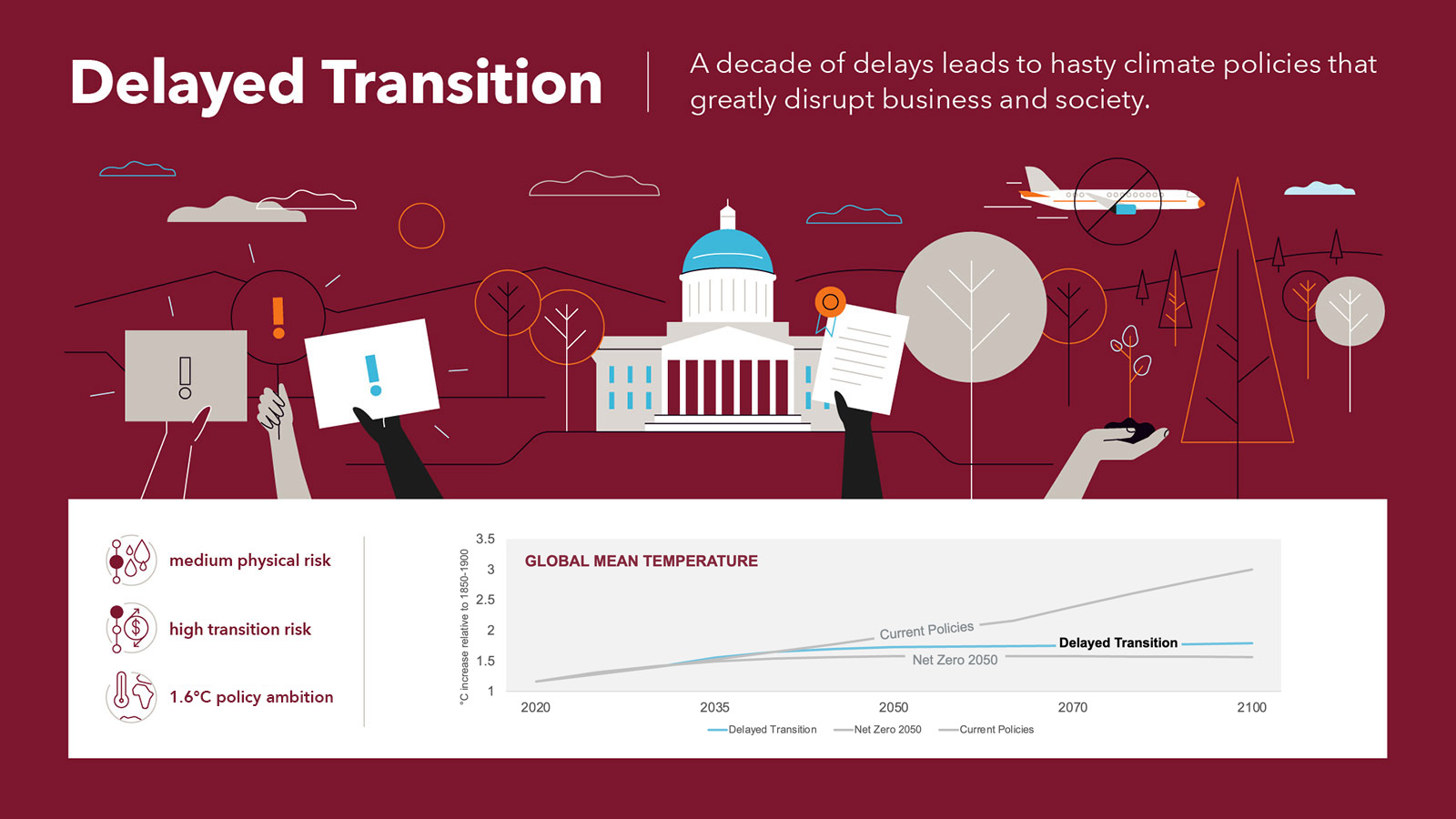
View from 2050
- A decade of inaction in the 2020s drove mounting pressure for climate action.
- This led to the adoption of hasty and reactionary policies in the 2030s.
- The disorderly approach came with high social and economic costs but ultimately led to a halving of emissions and peak warming at 1.8°C.
Delayed Transition: What Defined the Decades
The 2020s
Policymakers and business implemented limited climate action
Governments and businesses took limited action to curb emissions due to lack of political capital caused by implementation challenges, supply chain constraints, and other competing priorities for land use.
Reliance on fossil fuels continued
Fossil fuel development continued, with renewables being viewed as a secondary, less reliable, option. Companies continued to set voluntary commitments, but often lacked robust strategies to implement and reach their targets.
Physical impacts brought supply chain disruption
Physical impacts from climate change became more frequent and severe. Businesses experienced supply chain disruptions from frequent supply shortages, increasing/volatile prices, and competition for resources.
The 2030s
Abrupt crisis response sparked action
As the social and economic impacts of acute and chronic weather events became increasingly evident, many governments declared the climate crisis an emergency and began taking abrupt, forceful, and disruptive action to reduce emissions. Costly policy instruments, such as stringent carbon prices and taxes were adopted broadly but unevenly across jurisdictions.
Business struggled amidst high compliance costs
Businesses were faced with high compliance costs and had to rapidly deploy costly technological innovation, employee reskilling, and reporting mechanisms. This led to rushed development of on-site renewable energy projects, energy procurement, and rapid emissions reduction programs at a greater cost.
Emissions reduction was ultimately successful but turbulent
The sudden overhaul of the energy system caused volatile energy prices and reliability issues as grids accommodated increased renewable energy and electricity loads. The rapid push for decarbonization and implementation of “blanket” policies meant that local contexts were often overlooked.
The 2040s
A new low-carbon economy emerged
Climate negotiations shifted from mitigation towards adaptation, with historically high-emitting countries failing to assume financial responsibility for climate impacts. Most investment in adaptation took place in high-income countries, leaving the middle- and low-income countries most exposed.
Decarbonization efforts shifted to hard-to-abate sectors
Sectors that struggled to decarbonize (e.g., heavy industry, steel, cement, aviation, shipping, mining) gained greater attention, driving investment in innovation to develop low-carbon production technologies.
Temperatures and physical impacts stabilized
With growing GDP loss and volatile markets, operating under uncertainty was the new norm. Businesses were faced with increasing costs of goods, and a need for greater investment to protect their operations from extreme weather events. Natural areas recovered, leading to an increase in carbon dioxide sequestered through land-based sinks. Continued investment in low-carbon energy and carbon removal technologies allowed the world to reach a state of net zero emissions.
Taken as a set, the climate scenarios offer important insights for business.
In every scenario, the physical impacts of climate change continue to intensify until the mid-2030s. There is an increasingly large divergence in physical risk after 15 years with radically different outcomes across the three scenarios over the long term. This means that while business should anticipate disruptive physical impacts across all scenarios, it is also possible to mitigate those impacts within a strategically relevant time frame.
Delayed action significantly intensifies both physical and transition risks for business and society. While the transition risks in the “Net Zero” scenario may seem high in the near term, they are amplified under “Delayed Transition,” where more drastic and reactive responses will be needed and business would be legally mandated to reduce emissions within a shorter period. Slow action magnifies both physical and transition risks.
Let’s talk about how BSR can help you to transform your business and achieve your sustainability goals.
